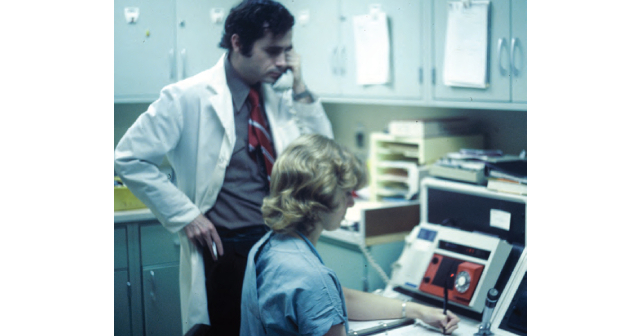

Explore This Issue
ACEP Now: Vol 42 – No 07 – July 2023Technological changes have helped emergency physicians become more efficient.
Formerly, all patients diagnosed with the venous thromboembolic (VTE) diseases of deep venous thrombosis (DVT) or acute pulmonary embolism (PE) were admitted for several days of inpatient care to enable therapy with intravenous heparin as a bridge to oral warfarin. Warfarin pills are inexpensive, but the associated hospital care is not. Warfarin is a drug highly prone to drug-drug and drug-food interactions.3 Further, warfarin dosing requires regular monitoring of the international normalized ratio (INR), which is both a cost and an inconvenience to patients. We can now safely treat most DVT patients as outpatients by prescribing direct oral anticoagulants (DOACs) such as Factor Xa Inhibitors. Subsequently, we also learned that PE patients without hypoxia or evidence of right heart failure can safely be discharged with DOAC prescriptions. DVT and PE have been transformed to diseases for which outpatient management is feasible and appropriate.4
Formerly, chest pain patients without an S-T Elevation Acute Myocardial Infarction (STEMI), whose pain was suspected to be cardiac in nature, became inpatients for sequential monitoring of their lactate dehydrogenase and creatine kinase isozyme profiles. This process required at least a full day. Now, for selected patients, emergency physicians can leverage low and non-rising high sensitivity troponin values and a low HEART score (composed of history, ECG, age, risk factors, and troponin level) to implement outpatient follow-up plans safely, within a few hours.5
Patients with acute ischemic strokes, STEMIs, and trauma, as well as many other diagnoses, have their workup largely completed, and even sometimes definitive therapy executed, before they leave the emergency department, rather than requiring inpatient units. We could do even better if only our patients would permit it. We already know how to apply validated and highly reliable clinical decision rules (CDR) such as the Ottawa Ankle Rules, the Ottawa Knee Rules, the NEXUS and Canadian C Spine rules and the PECARN (for children) and Canadian Head CT (for adults) rules.6–11 All perform with high accuracy and validity. However, we know that patients often expect radiographs that these CDRs would establish as contraindicated.
Our collective experience is that a significantly long time is required to explain these CDRs to patients, so it becomes more cost- and time-effective simply to obtain the non-indicated imaging. Emergency medicine should advocate directly to patients to allow doctors to implement these CDRs more efficiently by applying effective bedside “plug and play” teaching tools and explaining CDRs. Such resources could dissuade patients from false beliefs and persuade them that omission of the contraindicated radiographs or tests represents appropriate care. This would both save money and shorten the patient’s ED stay. Added benefit would accrue when a pediatric patient avoids CT images, thereby decreasing the potential risk for a subsequent cancer.12
Pages: 1 2 3 4 | Single Page





No Responses to “Emergency Medicine Deserves to “Re-Brand” Itself as a Cost Saver”